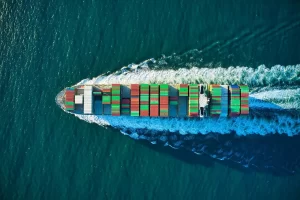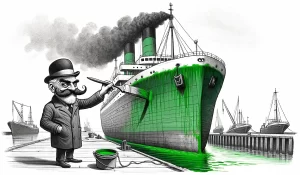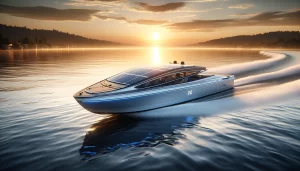The fleet of 6,000 tugboats in the United States is one of the largest sources of maritime carbon emissions in the country. These unique vessels use large amounts of energy relative to their size and, on average, are some of the oldest vessels operating today. How can we decarbonize them?
Don’t Tug on Me
Technically, there are two types of vessels: tugboats and pushboats. Both are used for assisting larger vessels and barges, often in tight spaces, but their primary function and operating environment differ. Tugboats (AKA tugs, or tow boats) can tow or push large vessels or barges and are found in waters from the open ocean to small rivers. Pushboats (AKA pushers) are more specialized for pushing barges and are commonly found on inland waterways and rivers. From here on when I say tugboats, I’m referring to both for simplicity.
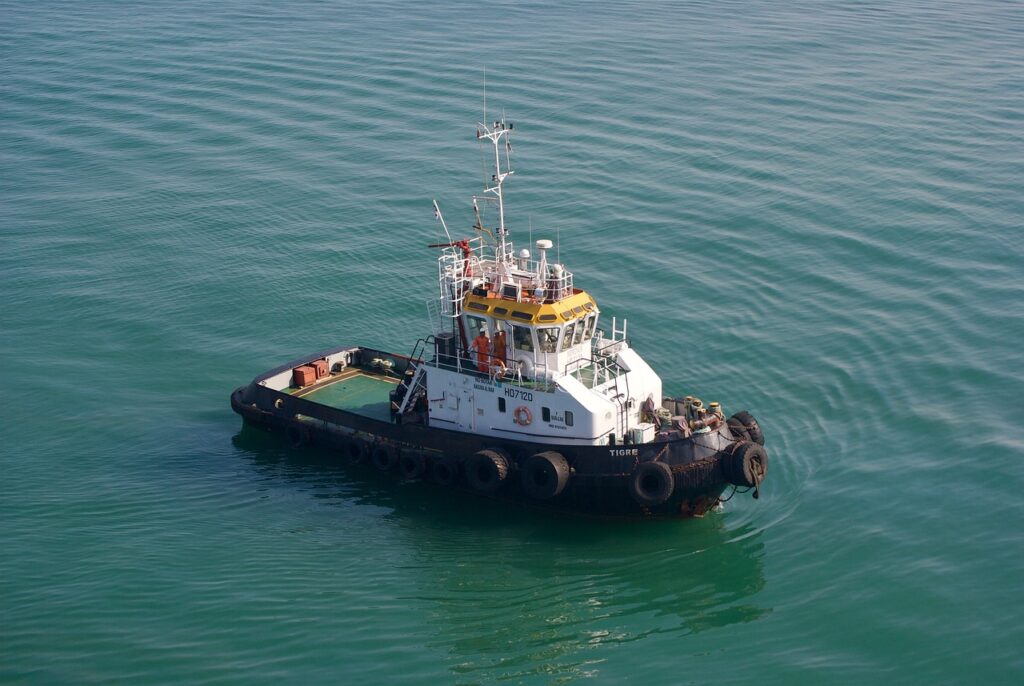
The pick-up trucks of the maritime industry, tugboats typically assist larger vessels and barges in harbors, canals, rivers, and other tight spaces where there is limited room to maneuver. They need to be able to move massive objects around, even in high winds, strong currents, and rough seas. Therefore it’s common for these boats to have significant horsepower. Tugboats are akin to linebackers in football; they are slow, but can exert massive amounts of power for short durations when needed.
The Tug Census
As of September 2023, the U.S. Coast Guard has 6,193 tugboats actively registered in the United States. Unlike cars which are usually registered and operated in the same state, ships are often registered in one state and operated in the waters of another. This caveat aside, Louisiana has the highest population of tugboats in the U.S., more than the next four states combined. No surprise given the plethora of offshore oil and gas activity in the region and the proximity to the Mississippi River, a major waterway for tugboats moving barges loaded with agricultural products.
With so many tugboats, they have a large impact on emissions of the U.S. maritime industry. We can approximate these emissions by looking at engine size, age, and operating characteristics.
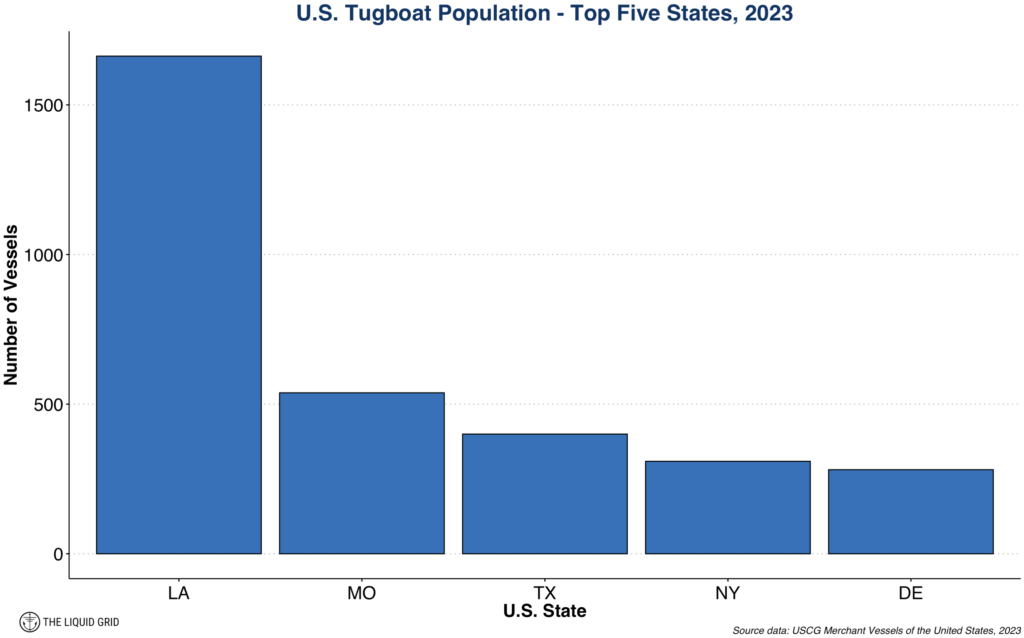
Engine size has a huge impact on emissions. On average, a U.S. tugboat weighs 178 gross tons, is 73 feet long, has a breadth of 27 feet, a depth of 9 feet, and has an engine rated for 2,480 horsepower (hp). For comparison, the average U.S. fishing vessel of similar length weighs 129 gross tons and a 590 hp engine. Tugs pack a lot of power relative to their size so that they can push much larger vessels.
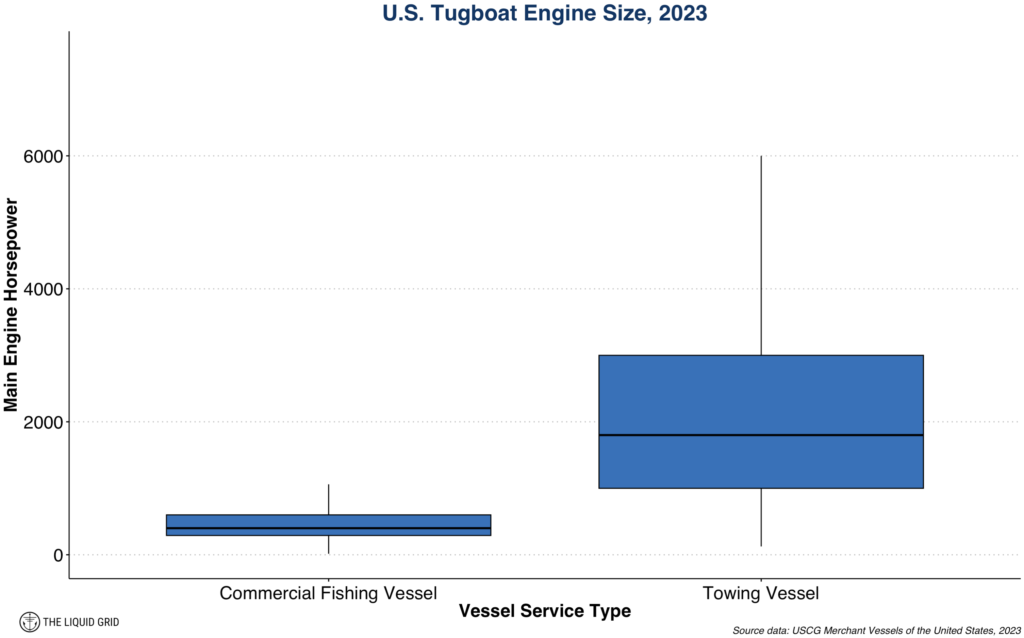
Geriatric Tugboats?
Engine size isn’t the only variable that affects emissions; age is also a potential indicator of fuel efficiency. The average age of a tugboat in the U.S. is 35 years, but this varies significantly depending on where the vessel operates. Ships operating predominantly in freshwater have significantly longer lives than those in saltwater. This is due to the corrosive nature of seawater, which isn’t kind to metal hulls and piping. For example, tugs registered in the Great Lakes states (mostly freshwater) have an average age of 47 years, whereas the average age for tugs registered in New Hampshire is 21 years.
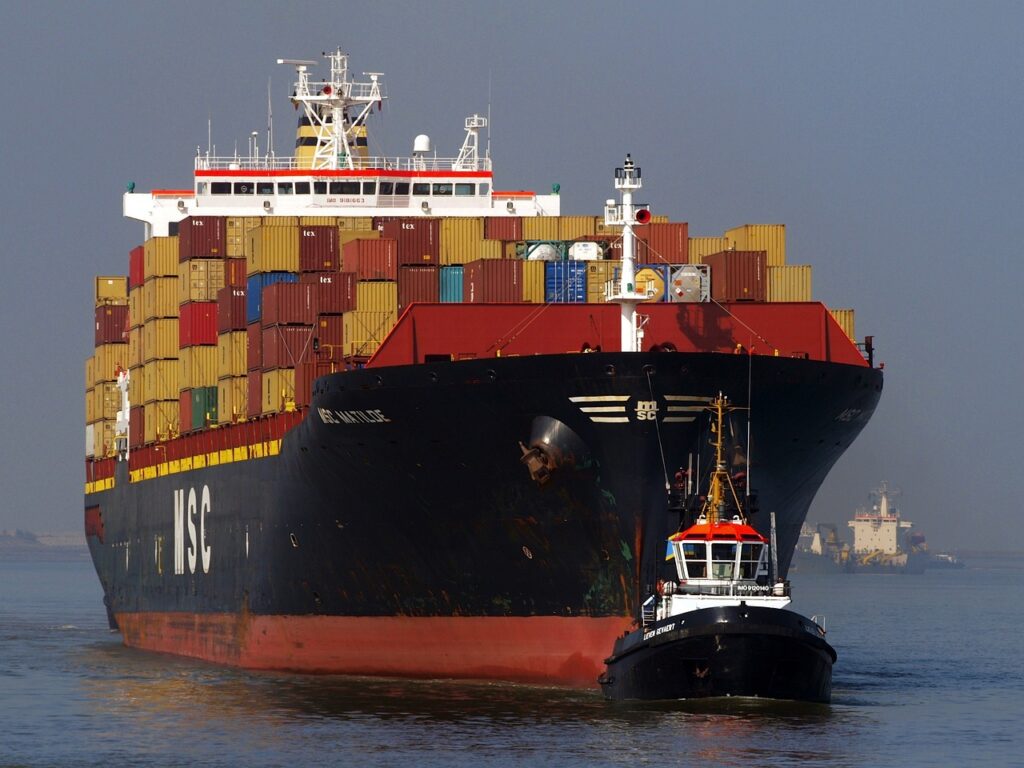
We’ve come a long way in engine design and fuel efficiency since the 1980s, so it’s no surprise that newer ships and engines tend to be more efficient than older ones. Of course, old boats can undergo retrofits to more modern technology, extending their service life, but doing a complete engine swap isn’t common.
There are a lot of old tugboats in the US that have large engines. Large engines use lots of fuel, old age means they are inefficient, and lots of burned fuel means lots of emissions. Let’s do the math.
U.S. Tugboat Emissions
To keep things simple I’ll use some assumed constants for vessel utilization and specific fuel consumption applied to each registered vessel and its rated horsepower. Not every vessel is operating the same number of hours per year, or using an engine with the same rate of fuel consumption. But this method puts us in the ballpark and I’m using assumed values provided by the EPA.
Assuming the average tug operates for 1,270 hours per year and has a medium speed diesel engine that consumes 205 grams of marine diesel fuel per kWh, their collective emissions is approximately 6.1 million metric tonnes (MMT) of CO2e each year. That’s equivalent to about 1.3 million cars (there are about 291 million cars in the U.S.). For context, the EPA’s 2019 GHG Inventory Assessment estimates total domestic emissions from maritime vessels at at 22.3 MMT CO2e, which would suggest tugs account for about a quarter of all U.S. maritime fleet emissions.
In the United States, the fleet of tugboats represents one of the largest sources of U.S. maritime emissions. They are also one of the oldest segments on average, potentially meaning many new tugboats will be built or retrofitted in the coming years to replace the ones retiring. In certain places, like California, regulations are forcing tugs to be zero-emission in the not-too-distant future. This makes tugboats an important piece of the maritime decarbonization puzzle.
Decarbonizing Tugboats
To decarbonize tugboats, we need a low-emission energy source. Fuels like methanol, ammonia, and hydrogen are all viable candidates. These fuels can offer substantial emissions reductions over marine diesel oil, if they are produced using sustainable feedstocks and renewable energy. Even battery-electric is possible for tugs.
Hydrogen fuel cells and battery-electric are particularly appealing for tugs due to their unique load-following characteristics. Diesel engines take a little while to ramp up their power output, whereas hydrogen fuel cells and batteries can provide the sporadic high-power needed when pushing large objects. But hydrogen and batteries suffer from a volume problem: it’s hard to store it in a dense form aboard a ship. Obviously boats have limited space on board, which means more frequent refuelings and/or limited range. As noted earlier, many tugboats are inland or coastal vessels, which means that they are in port fairly often with relatively ample opportunities for refueling or recharging.
Examples of recent low-emission tugs include: the world’s first dual-fuel hydrogen tug, Hydrotug 1, is being commissioned into service in Antwerp as of this writing. In the United States, several companies, including ABB, have partnered to construct the world’s first methanol-hydrogen fuel cell tugboat. Or over in Germany, the Elektra claims to be the world’s first hydrogen push boat. Crowley is laying claim to the nation’s first all-electric tugboat due to operate in San Diego, as well as designing the HyZET, a full hydrogen tugboat.
Tugboats are a unique segment of the commercial maritime industry. In the U.S. they are one of the largest segments by number, one of the oldest, and one of the highest-emitting. Fortunately the tides are changing and a new era of low-emissions tugs are on the horizon.

